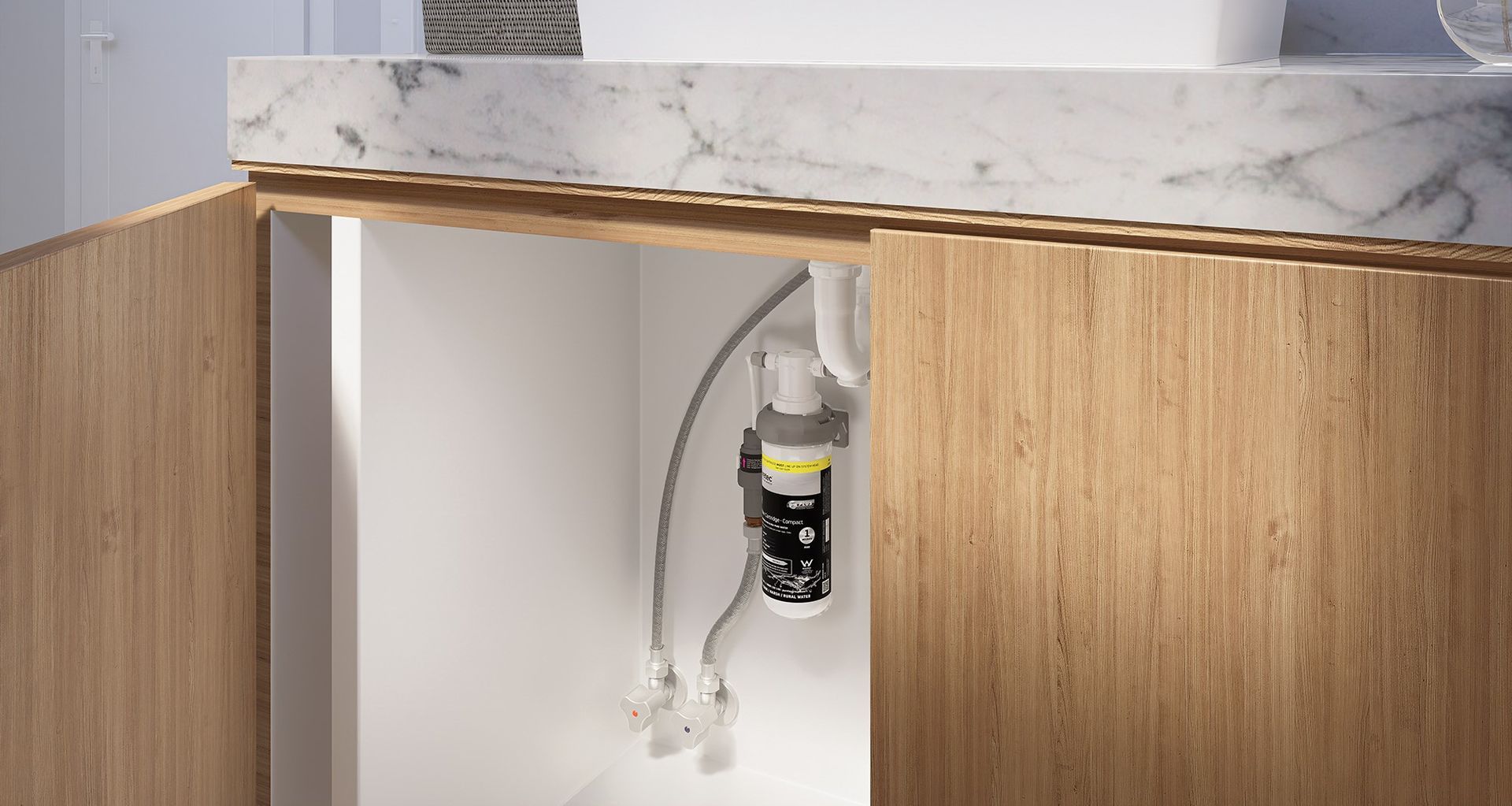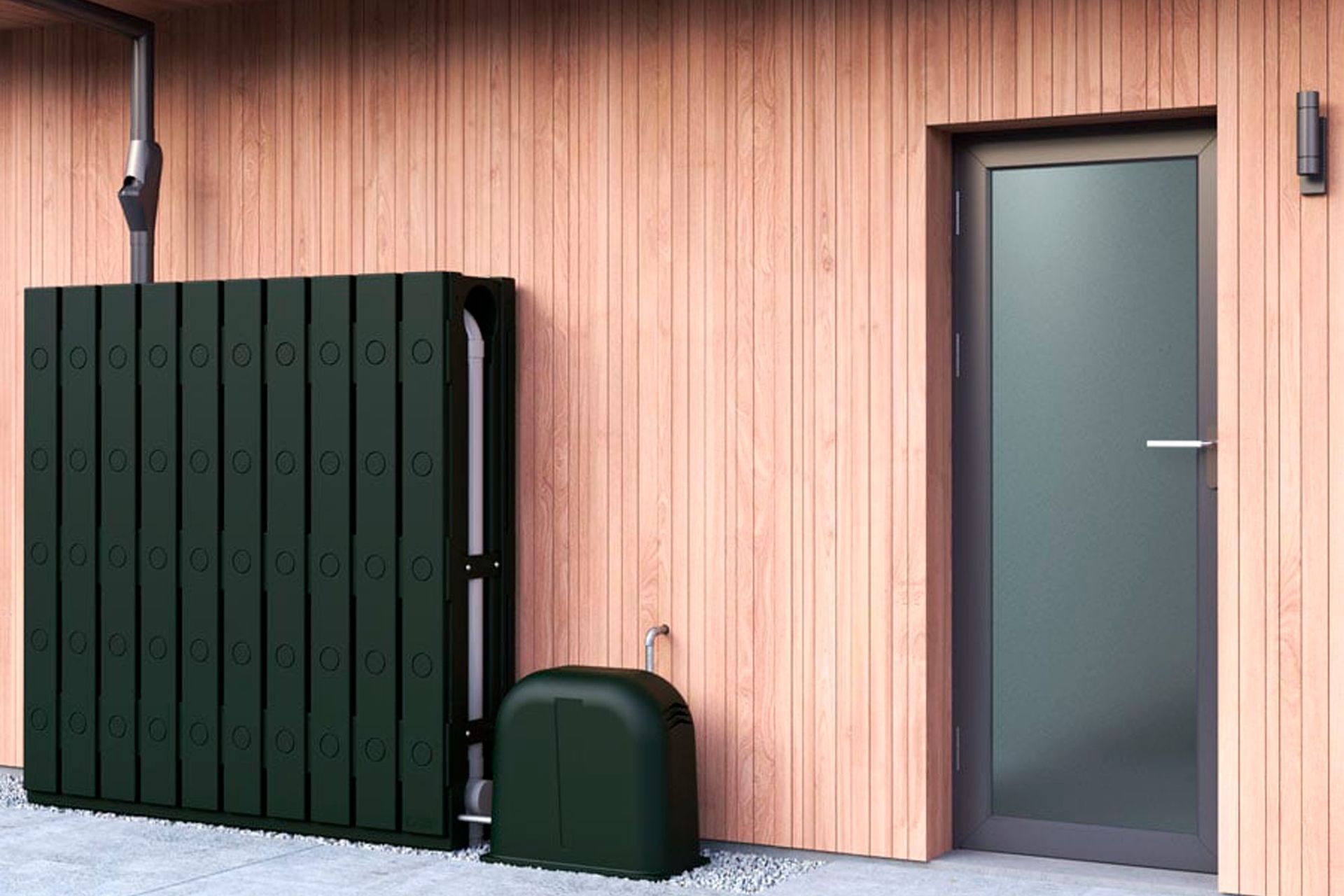How to choose a water filter system in New Zealand
Written by
29 May 2024
•
9 min read

There's nothing more satisfying, or better for you, than a glass of freshly filtered water. For those with sensitive skin, filtered water in the bathroom and laundry can also make a big difference to your day-to-day life. However, to enjoy these benefits, you need to pick the right solution which means following a few key steps to ensure you choose a water filter system that works for you.
1. Determine your water source and its contaminants
The first thing to do is determine where your water is sourced from to get an idea of the potential contaminants you might be dealing with. Most homes in New Zealand will have water sourced from one of the following:
1. Municipal water supply
Most homes in urban and suburban areas in New Zealand will be sourced from municipal water supply. This water is typically drawn from reservoirs, rivers or lakes and treated at a water treatment plant before being distributed through a network of water pipes. For example, Auckland's water is largely sourced from dams around the region and the Waikato River.
The water treatment process removes contaminants to ensure it is safe for use and consumption by filtration, chlorination and sometimes fluoridation.
Common contaminants: While the water has been treated, municipal water can still contain chlorine, sediment and trace amounts of other contaminants from ageing infrastructure, an issue that has been well-documented in New Zealand in recent times.
2. Bore water
Bore water, also known as ground water, comes from underground aquifers accessed via wells or boreholes. According to Land Air Water Aotearoa (LAWA), 40% of New Zealanders rely on ground water for their drinking water.
Bore water is sometimes treated before it reaches the home but this depends on local council regulations and the bore system being used.
Common contaminants: These can include minerals like calcium and magnesium, nitrates, pesticides (especially in rural areas) and pathogen contamination.
3. Rainwater
Rainwater is typically collected from rooftops via guttering systems and stored in retention tanks. It is a popular source for many rural homes, especially in regions with high annual rainfall. It is also often used as a supplementary source in urban areas, plumbed to supply a home's toilets, laundry and garden hose.
Rainwater, when used for drinking water, often requires filtration and disinfection.
Common contaminants: Rainwater typically needs filters for leaves, dirt, bird droppings, microorganisms, and potential chemical contamination from roof materials.
While the above guidance describes the contaminants you may expect to find, it always pays to get your water tested independently for confirmation of what's present so you can make an informed decision about the water filter system you may need.
2. Understand the different types of water filter systems
When looking at the different types of water filter systems you'll need to pick between a point-of-use solution (like an under-sink water filter) or a point-of-entry solution (like a whole house water filter). You'll also need to choose the method of filtration (activated carbon filter, reverse osmosis system, UV purifier etc).
It's important to have a good understanding of all these different options so you can adequately compare the merits of each.
1. Point-of-use (POU) water filters
A point-of-use (POU) water filter is a type of filtration system installed at specific water access points, such as countertop kitchen faucets or under sink locations, to treat water immediately before it is used. These filters are designed to remove contaminants and improve the taste and quality of water for drinking and cooking.
They are often fairly easy to install and provide instant filtered water, however, they obviously only do so at the source they are installed (i.e. the kitchen taps if installed there) and require regular maintenance such as timely changes of filter cartridges.
2. Point-of-entry (POE) water filters
These are essentially whole-house water filter systems, installed at the main water line where water enters a home, ensuring that all water used throughout the house is filtered. They are typically larger and often incorporate multiple stages of filtration to address various impurities such as sediment, chlorine, heavy metals, and other pollutants.
They provide comprehensive filtration, ensuring that all water used in the home, from drinking to bathing, is clean and safe. This is particularly beneficial for individuals with skin sensitivities or allergies, as it removes contaminants that can cause irritation. These systems can also extend the lifespan of plumbing and appliances by reducing the build-up of sediment and scale.
However, they are generally more expensive to purchase and install compared to point-of-use filters. Installation can be complex and maintenance can be more demanding, as the entire system must be monitored with filters replaced periodically.
3. Activated carbon filters
Transitioning to the different water filtration methods, we begin with activated carbon filters which remove impurities like chlorine, volatile organic compounds (VOCs), and unpleasant tastes and odours. These are commonly found in POU filters like countertop and faucet-mounted filters. They are less effective at removing dissolved solids, heavy metals, and microorganisms, which may require additional filtration methods.
4. Reverse osmosis systems
These systems use a semipermeable membrane to remove a wide range of contaminants, including dissolved salts, lead, nitrates, and bacteria. They are also often installed under the sink and provide high-quality drinking water. They can be a little more expensive than other water filtration systems and do produce wastewater during the process which lessens its water efficiency.
5. Ultraviolet (UV) purifiers
UV purifiers use ultraviolet light to kill bacteria, viruses, and other microorganisms. They are chemical-free which is a big part of their appeal. However, they do not remove chemical contaminants, sediments, or dissolved solids, so they need to be paired with other filters for complete water purification.
6. Ceramic filters
Made from porous ceramic material, these filters physically block contaminants like bacteria and sediment. They are durable and reusable, often used for filtering rainwater and other natural water sources. They are less effective at removing viruses and chemical contaminants, often requiring additional filtration methods for comprehensive purification.
7. Sediment filters
Sediment filters remove larger particles such as sand, dirt, and rust from the water. They are not designed to remove chemical contaminants, microorganisms, or dissolved solids and are typically used as a pre-filter in combination with other filtration systems to protect more delicate filter systems.
8. Ion exchange filters
These systems use resin beads to exchange unwanted ions, such as calcium and magnesium (which cause hardness), with more desirable ions like sodium or potassium. They are primarily used in water softeners.
3. Consider your needs and priorities
Having established the water source for your home and read about the different water filtration systems available, you now have most of the information you need to make a decision. The final step is about bringing all this information together and applying it to your own specific situation. The following questions will help you put the pieces together so you can make a decision with confidence.
1. Do you need whole house filtration or specific areas only?
This is a fairly simple starting point as you just need to decide whether you want filtered water for the entire home or just a specific area like the kitchen. If it's solely for cooking and consumption then a point-of-use solution may suffice, however, if you want all your water filtered then you'll need a whole house water filtration system.
2. Are you primarily concerned with health and safety, taste and odour, or both?
If your main concerns are around health and safety, then options that effectively remove harmful contaminants like bacteria, viruses, and heavy metals like, reverse osmosis filters, are a good choice. If you're comfortable with the general safety of your water but want to improve the taste and odour, solutions like activated carbon filters are excellent.
If you want a comprehensive solution, you might want to look at a system that incorporates a couple of filtration methods, like one with a sediment filter and an activated carbon filter or a UV purifier.
3. Do you want a DIY installation solution?
If you are sufficiently skilled, then you might want to choose a DIY solution which will likely be a point-of-entry option. This will save you a bit of money which could be a deciding factor for you. However, if you need a whole house filtration system, then professional installation will be required.
4. How much ongoing maintenance can you commit to?
Most water filtration systems need to be maintained for them to work effectively but some require a bit more attention than others. For instance, activated carbon filters are easy to replace but will need to be changed regularly (usually every 3 - 6 months). On the other hand, reverse osmosis filters are more complex, requiring the service of a professional (usually every 6 - 12 months).
These numbers will vary from one solution to the next but it pays to find out so you know what you're setting yourself up for.
5. How much are you willing to spend?
It's important to understand the all costs involved including the purchase price, maintenance costs and energy consumption, for those systems that require it.
Point-of-use solutions are cheaper to buy, typically below $500 though some solutions are sold with kitchen mixers for more. Whole house water filtration systems start from at least $1,000 at a minimum, plus installation on top of this which can add another $500 - $1,000 depending on the complexity of the job.
Maintenance costs are mostly about the replacement filters, membranes etc and any service fees if the professional is required. Filters can cost anywhere between $100 - $500 and if you choose a solution that doesn't require a professional, you won't have to worry about the service fee.
The last cost to bear in mind is energy consumption for systems like UV disinfection and some reverse osmosis systems which require power to operate. For example, a 50W UV light operating all year as part of a UV water filtration system could cost you around $100 - $150 in power, depending on your local electricity rate.
Enjoy safe, clean and refreshing water in your home
Having made it through this comprehensive guide, you're hopefully now in a much better position to pick the perfect water filter system for your home. Whether it's an under sink filter for great-tasting drinking water or a whole house water filter to clean out your water supply, you'll find a solution that does exactly what you need it to throughout the year.
Related article: Stylish kitchen sink options and why you should (or shouldn't) choose them



